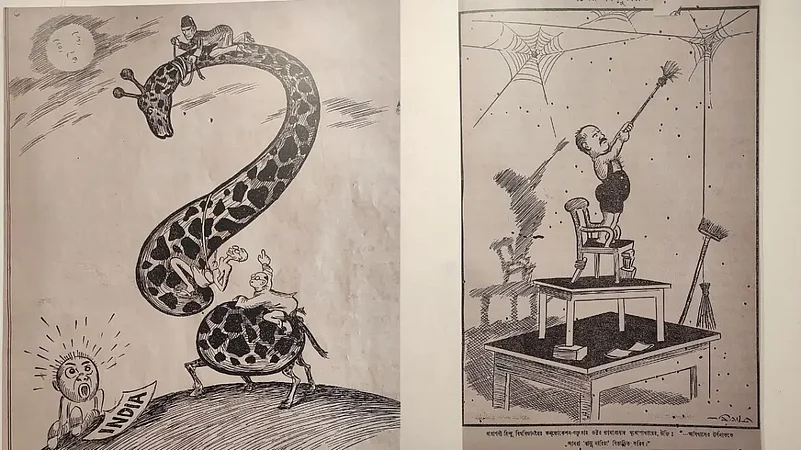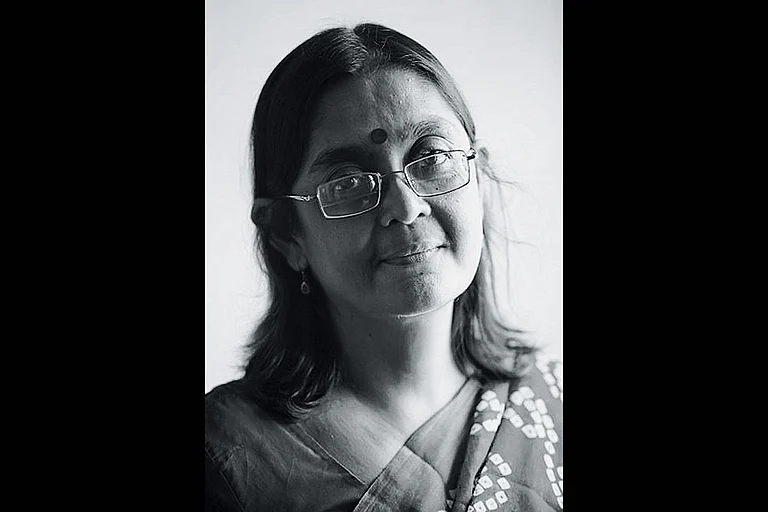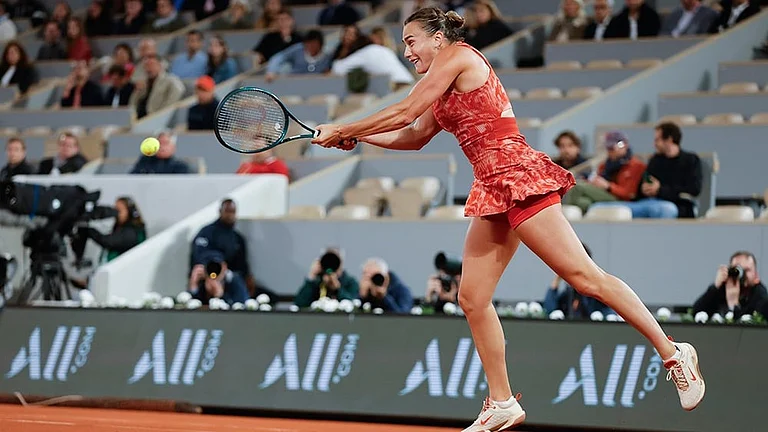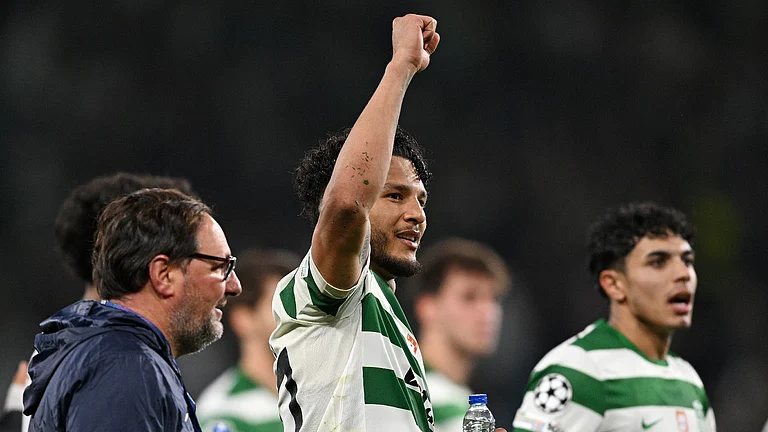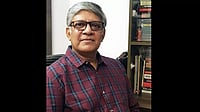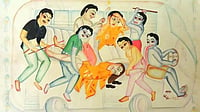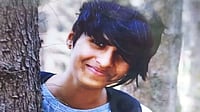To keep doing this job [draw political cartoons] week after week, I think you have to want to change the world, while understanding that you can't. You have to hold both of those contradictory ideas simultaneously.
- Tom Tomorrow*
Five policemen of the Gestapo have trained their guns on a dove flying overhead. It carries an olive branch in its beak and has the words ‘Nobel Peace Prize’ on its body. There’s one more person looking at the bird. It is a particularly frail-looking Mahatma Gandhi, feeding bird seeds from a box to a cow. The caption in English, perhaps translated from the original Bengali text at the bottom, states that the ceremony for the Nobel Peace Prize in 1939 has been “postponed until the month of December of the forthcoming year”. 1939 is the third time out of the five years (1937, 1938, 1939, 1947, and 1948) that Gandhi was nominated for the Nobel Peace Prize.
It was the same year when he wrote a letter to Adolf Hitler stating, “Will you listen to the appeal of one who has deliberately shunned the method of war not without considerable success?” after World War II appeared imminent. The letter from Wardha never reached Berlin after it was intercepted by the British government. The war happened and saw the fall of Nazi Germany. And Gandhi winning the Nobel Prize remained one of India’s dreams that never materialised.
This cartoon is part of Political Cartoons from Bengal 1950-70, an exhibition at India International Centre in New Delhi, curated by Samit Das, an artist with an affinity for photography, painting, architectural installations, and artist books. Duration wise, the show from July 7 till the15th is quite the blink-and-you-will-miss-it, because Das intends to give audiences a whiff of what appears to be his ongoing research that will culminate into a book, hardbound and e-copy, and unveiled at the 2023 Kolkata Book Fair.
Bengal, says Das, derived its cartooning trends from the indigenous Battala woodcuts and Kalighat paintings. The display of ink, painting, drawings, and even pages from books, showcases Bengali cartoonist greats who chronicled the two decades of the post-Independence era when India had to rebuild itself while facing colonial repercussions such as the Partition, Kashmir conflict, a flagging economy, among other things. The line-up consists of artists who also became cartoonists/illustrators, such as Sailo Narayan Chakraborty, Debiprasad Roy Choudhury, Kutty, Chandi Lahiri, Rebati Bushan and Amal Chakraborty. The works are sourced from collections and print editions of Bengali media they originally featured in, which include mainly Lolita, Basumati, Chitrangada, Bangasri, Prabartak, The Modern Review, Suchitra Shishir, and Bharatbarsha.
It’s quite the no-frills display. No elaborate wall text. Even the English captions are sporadic, let alone the names of the cartoonists. The intention is to keep the focus on the artworks as collective voices concerning decisions made by Indian leaders. If you want to know more, use a Bengali to English translation app, says Das, not in the mood to spoon-feed but hoping curiosity gets the better of you. “Also, each cartoonist has their own style of cracking a joke, creating tamasha,” says Das, wary that the Bengali to English translation could interfere with the artist's mood or tone.
The cartoons are largely centred on the actions of Mahatma Gandhi, Jawaharlal Nehru, and Mohammad Ali Jinnah. Many of the artworks use animals as metaphors. For instance, the show opens and closes with an octopus. The first image shows Gandhi as the eight-limbed sea creature captioned ‘domestic sphere is the perfect space for practising non-violence, while the last image shows the mollusc in mammoth proportions, grabbing people in an act of “galla ghotna (throttling)” explains Das. Towering over a child (India) is a giraffe shaped as a huge question mark, with Jinnah on its head, Gandhi clutching its neck, and Subash Chandra Bose on its back that is separated like a dot in the punctuation. In another, titled Quicksand, Gandhi extends his handshake to
Jinnah who appears guarded; a goat between them, ready to head-butt reflects this tension. Gandhi rides on a camel called Constituent Assembly towards a sign showing a ‘mirage of independence’. Dr Syama Prasad Mukherjee, the founder of Bharatiya Jana Sangh, the predecessor to Bharatiya Janata Party, looks like a little boy in a playsuit, who is unable to clean the cobwebs on the ceiling even after standing on a chair placed atop two tables. Enacting the Aesop fable, Bose's party is the wolf and the Muslim League is the stork.
The display would be incomplete with an ode to Rabindranath Tagore. After all, Das, a Santiniketan alumnus, had documented the Tagore Museum from 1999-2001 and even curated a show titled, The Idea of Space and Rabindranath Tagore. One work in particular of four men with long white beards, wearing identical gowns, footwear, and a similar scowl, will produce giggles when you are told they are trying to ape Tagore. “Tagore never believed in idol worship but became an idol, a gurudev that everyone started worshipping him, and wanted to be him. They maintained the same beard, hair, and clothes. He had such a strong personality. Even if he stood next to an ornate door, you would still only see Tagore,” notes Das. This viewing and the resultant book are Das’s attempts to offer alternate spaces for these tongue-in-cheek political imageries with the purpose to educate the generations of the now. “This is not my critical composition or narration. I’m not here to judge whether Gandhi, Nehru, Jinnah were right or wrong. Cartooning is a highly skilled and intelligent form of art but is dying out. The cartoonist left to publish their art on social media as there is no support from editors of magazines, journals, and the news media. Unlike back in those days, when all these artists in the show did excellent paintings and sculptures, and at the same time could raise their voice in the media through these cartoons.”
Apart from this project, Das has an upcoming solo sometime in September-October and a book on FN Souza’s drawings in the Dhoomimal Gallery collection of Mohit Jain. “As there’s exhaustive coverage on Souza, I am only looking at what other artists think about him and hold conversations with them. I have already spoken to Amitava Das, and next to Manu Parekh,” says Das, who just conceptualised and edited Shades and Shine of Kartick Chandra Pyne, a coffee-table book by Dhoomimal Art Centre.
*Tom Tomorrow is the pen name of editorial cartoonist Dan Perkins.






